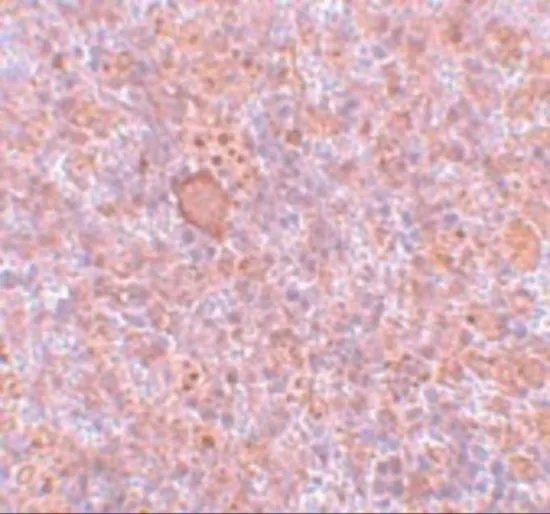CtIP antibody [19E8]
GTX70264
ApplicationsImmunoFluorescence, ImmunoPrecipitation, Western Blot, ChIP Chromatin ImmunoPrecipitation, ImmunoCytoChemistry, Other Application
Product group Antibodies
ReactivityHuman, Mouse
TargetRBBP8
Overview
- SupplierGeneTex
- Product NameCtIP antibody [19E8]
- Delivery Days Customer9
- Application Supplier NoteWB: 1:500-1:1000. ICC/IF: 1:100-1:1000. *Optimal dilutions/concentrations should be determined by the researcher.Not tested in other applications.
- ApplicationsImmunoFluorescence, ImmunoPrecipitation, Western Blot, ChIP Chromatin ImmunoPrecipitation, ImmunoCytoChemistry, Other Application
- CertificationResearch Use Only
- ClonalityMonoclonal
- Concentration1 mg/ml
- ConjugateUnconjugated
- Gene ID5932
- Target nameRBBP8
- Target descriptionRB binding protein 8, endonuclease
- Target synonymsCOM1, CTIP, JAWAD, JWDS, RIM, SAE2, SCKL2, DNA endonuclease RBBP8, CTBP-interacting protein, retinoblastoma binding protein 8, sporulation in the absence of SPO11 protein 2 homolog
- HostMouse
- IsotypeIgG1
- Protein IDQ99708
- Protein NameDNA endonuclease RBBP8
- Scientific DescriptionThe protein encoded by this gene is a ubiquitously expressed nuclear protein. It is found among several proteins that bind directly to retinoblastoma protein, which regulates cell proliferation. This protein complexes with transcriptional co-repressor CTBP. It is also associated with BRCA1 and is thought to modulate the functions of BRCA1 in transcriptional regulation, DNA repair, and/or cell cycle checkpoint control. It is suggested that this gene may itself be a tumor suppressor acting in the same pathway as BRCA1. Three transcript variants encoding two different isoforms have been found for this gene. More transcript variants exist, but their full-length natures have not been determined. [provided by RefSeq, Jul 2008]
- ReactivityHuman, Mouse
- Storage Instruction-20°C or -80°C,2°C to 8°C
- UNSPSC12352203
References
- Liu M, Zhang Y, Wu Y, et al. IKZF1 selectively enhances homologous recombination repair by interacting with CtIP and USP7 in multiple myeloma. Int J Biol Sci. 2022,18(6):2515-2526. doi: 10.7150/ijbs.70960Read this paper
- Ahrabi S, Sarkar S, Pfister SX, et al. A role for human homologous recombination factors in suppressing microhomology-mediated end joining. Nucleic Acids Res. 2016,44(12):5743-57. doi: 10.1093/nar/gkw326Read this paper
- Baude A, Aaes TL, Zhai B, et al. Hepatoma-derived growth factor-related protein 2 promotes DNA repair by homologous recombination. Nucleic Acids Res. 2016,44(5):2214-26. doi: 10.1093/nar/gkv1526Read this paper
- Liao CC, Tsai CY, Chang WC, et al. RB·E2F1 complex mediates DNA damage responses through transcriptional regulation of ZBRK1. J Biol Chem. 2010,285(43):33134-33143. doi: 10.1074/jbc.M110.143461Read this paper
- Gu B, Chen PL. Expression of PCNA-binding domain of CtIP, a motif required for CtIP localization at DNA replication foci, causes DNA damage and activation of DNA damage checkpoint. Cell Cycle. 2009,8(9):1409-20.Read this paper
- Wu M, Soler DR, Abba MC, et al. CtIP silencing as a novel mechanism of tamoxifen resistance in breast cancer. Mol Cancer Res. 2007,5(12):1285-95. doi: 10.1158/1541-7786.MCR-07-0126Read this paper
- Liu F, Lee WH. CtIP activates its own and cyclin D1 promoters via the E2F/RB pathway during G1/S progression. Mol Cell Biol. 2006,26(8):3124-34.Read this paper





